Eastwoodhill arboretum
Alex Davies, New Zealand Tree Grower February 2018.
Eastwoodhill is a property beyond Ngatapa, 37 km from Gisborne. This location is remote relative to most of New Zealand. In relation to the rest of the world it is very remote. As the National Arboretum of New Zealand its location is hardly well planned with regard to access. National arboreta in other parts of the world, of comparable size to Eastwoodhill, such as Westonbirt in England, the National Arboretum in Washington DC, and the new Australian National Arboretum in Canberra, are only a short distance from the centre of major cities. They therefore have high visitor rates, such as half a million a year in Washington DC.
By contrast, in the last year Eastwoodhill had 8,000 visitors. This is a satisfying increase from earlier years, but generates negligible income to keep a large park attractive and functional. With no income from central or local government, the Eastwoodhill Trust relies heavily on benefactors and investments for the employment of the five staff who manage the trees, the equipment, the shop, the visitor centre and accommodation, as well as education and publicity.
It is not easy to define what an arboretum is. The word means a place with trees. This would apply to almost any garden, and even to commercial plantations and regenerating and old growth forests. Eastwoodhill’s curator, Dan Haliday, is helpful with his definition as ‘a collection of rare and unusual trees’ or, as he points out in more modern usage ‘a botanical garden containing living collections of woody plants’. Anyone who visits Eastwoodhill can see there is an impressive collection of trees. Each tree demonstrates nature’s artistry.
However, most of us also recognise that the plant associations, the seasonal changes and the terrain all contribute. The other uses of this garden, such as making unusual plants accessible for study, saving them from extinction or providing seed for propagation, are not why most visitors travel long distances to see an arboretum, and not why an arboretum is created.
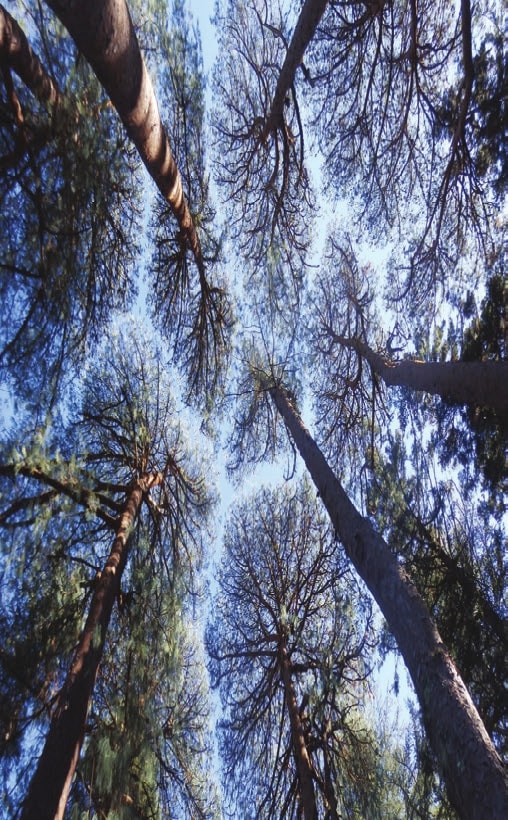
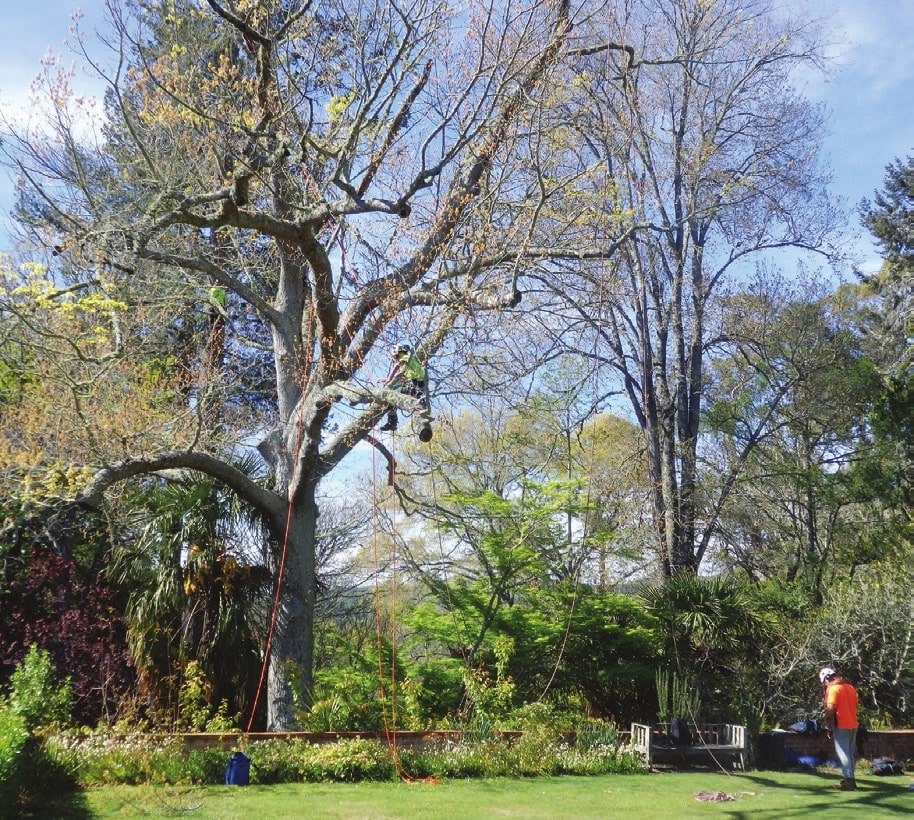
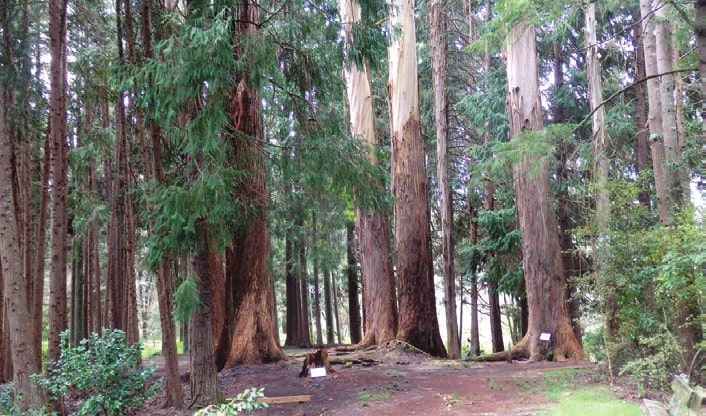
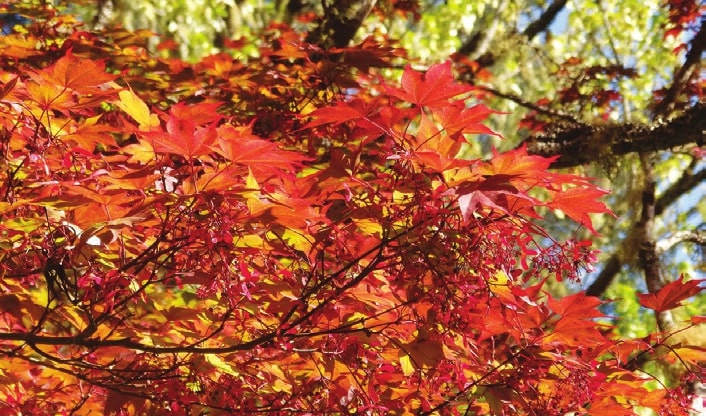
Creating an arboretum
How is an arboretum created? The story of Eastwoodhill must be the most fascinating and unlikely of any. It began when Douglas Cook won a ballot to a tract of bare or scrubby hill country in 1906. Dismayed by the barrenness, he devoted his life to a fetish of tree planting. This was in spite of the dry, porous soil and prevalence of droughts and frosts which killed many young trees.
As well as these real and frequent setbacks, Douglas Cook also feared that at the end of his life, adjacent farmers would bring the land back into pasture. He was seen locally as an eccentric, who spent staggering sums on planting good farmland with useless trees and who enjoyed gardening clad only in hat and boots.
Joined by a dedicated assistant, a young Flock House cadet Bill Crooks, Cook was able to extend his plantings from 1927. Crooks stayed at Eastwoodhill for 47 years, in spite of the hardship he and his wife endured in bringing up five children in a two-roomed cottage.
Douglas Cook died in 1967 aged 81 years. He had spent an average of £1,000 annually on plants from overseas and New Zealand, mainly funded by sale of part of his original land.
His fear that all his work might be lost was abated by the purchase of the property by another tree lover, H B (Bill) Williams, two years before his death. A trust was established by Act of Parliament in 1975, ensuring that the arboretum will endure. The trust board currently has six members representing the Minister of Conservation, the Williams family, the Gisborne District Council, the Poverty Bay Horticultural Society, the East Coast Farm Forestry Association and the Friends of Eastwoodhill.
Separate parks
Eastwoodhill is 135 hectares in area. It is mostly hilly, rising from 120 metres above sea level at the entrance to 280 metres at the highest point on the back boundary. Stock are excluded from the lower part where the trees are more mature, but higher up sheep are grazed by arrangement with a neighbouring farmer. This controls weeds, but new plantings have to be protected by cages.
Two small streams, each with several artificial ponds, flow in valleys and join the seasonally flowing Taumatapoupou Stream. Douglas Cook made his plantings in regions which are now indistinctly separate, called parks, beginning with Corner Park in 1927, and in stages to when he finished his planting with Douglas Park in the 1960s. A major contribution was made in the year 2000 with the planting of Millennial Wood, a 10-hectare hilly area. About 1,000 trees of proven locally successful species with fine autumn colouring were donated and dedicated to family members or to signify an event. The effect after 17 years is already impressive.
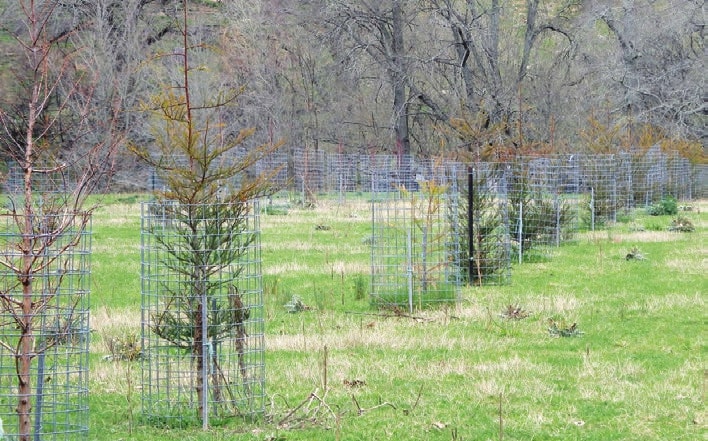
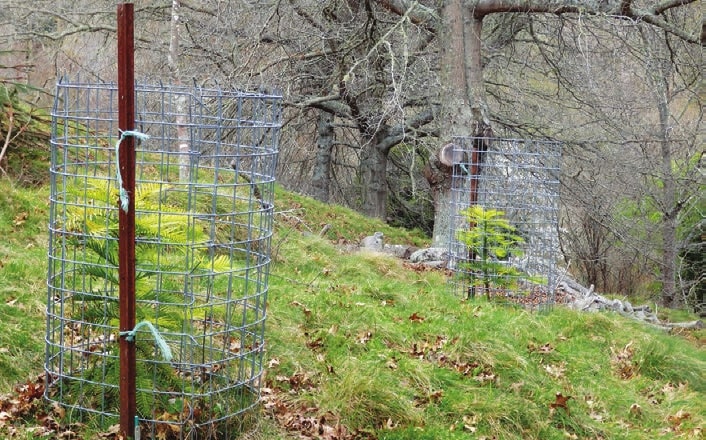
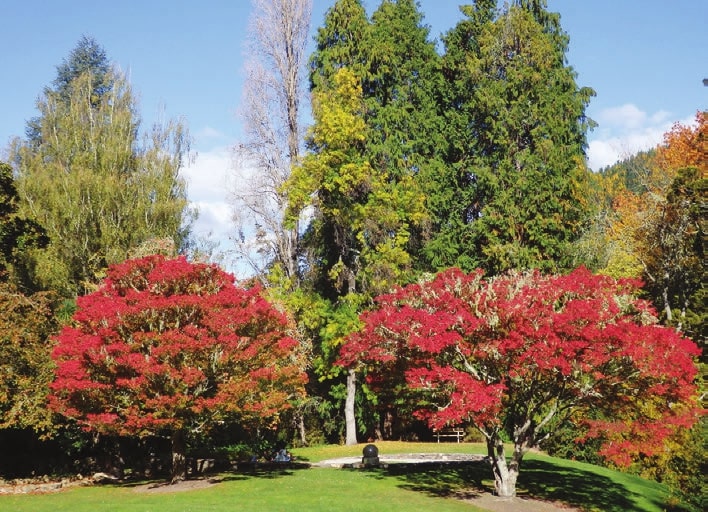
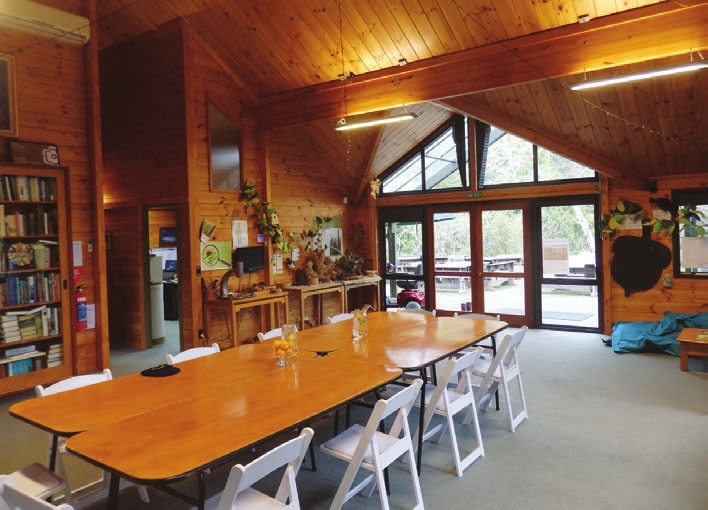
Tree cathedral
Douglas Cook planted a tree cathedral in the area known as Cabin Park in 1940, having conceived the idea on a trip to England. He envisaged walls of Lawson cypress with windows cut out, tall columns of Eucalyptus regnans and even a cross of pruned blue spruce at the altar. In the mid-1950s, the foliage of the cypress reached to the ground, enclosing the interior, but today, shading has affected this and the effect is lost.
One of the columns is the tallest tree in the arboretum reaching 53 metres in 2003. At 80 years old, it still has some way to top the tallest specimen in New Zealand, at Orokonui near Dunedin, which is 80 metres tall, or the tallest flowering tree in the world, an E. regnans in Tasmania which is 100 metres in height.
The recently planted new cathedral, matching the size of Westminster Abbey, therefore follows a tradition begun by Douglas Cook. It is on the only piece of flat land on the property. Plantings of coast redwoods for the columns, and ginkgos, maples, dawn redwoods and lindens are arranged in neat rows, protected from sheep by cages, awaiting future generations of visitors to see the effect. Of other tree cathedrals in the world, in England, Italy and the USA, only one at Whipsnade is as old as the one Cook created, and none will match the grand effect envisaged for the new one at Eastwoodhill.
Centenary
The centenary of tree planting at Eastwoodhill was in 2010. The trust board turned its collective minds to what would happen in the next 100 years, and employed the USA based landscape architects Nelson Byrd Woltz to help with a master plan. They accepted Douglas Cook’s apprehension of the threats to the environment of the nuclear arms race in the mid-20th century and the continuing demands of expanding human populations, threats of disease and climate change to forest ecosystems worldwide.
Their plan goes beyond the conservation uses of an arboreal ark to an overlay of ecozones. Each zone would have a display kiosk surrounded by feature gardens demonstrating such threats as agricultural pollution, water conservation, disturbances to forest structure, severe climate change, food and habitat for animal life and loss of biodiversity. The zones would be connected by a roading system. The benefits of such developments are debatable, and depend on greater financial resources and staffing than is currently possible. Eastwoodhill’s isolation may well be the means by which it is kept more as a wilderness to be explored than a manicured park.
New entrance
A visitor to Eastwoodhill now enters along a new driveway with safer access − the entrance way funded by the Gisborne Rotary Club. From the car park a walkway leads up to the visitor centre where the entrance fee is paid, refreshments are available and there is a small shop. Hopefully, trees propagated at Eastwoodhill will soon be available for those who want a living and lasting souvenir.
Beyond the reception area is the Discovery Centre with a historical display which also shows how the arboretum is being developed for the future. It houses a herbarium, begun in 1994 to hold specimens from the arboretum. This has been extended to include plant material endemic to, or of significant botanical interest to, the East Coast region. It now contains 1800 specimens.
The children’s corner includes a book library and an interactive microscope with digital projection for anyone with an enquiring mind. Children are shown how to propagate trees from seed and are encouraged to take home seeds to start their own forest. Outside there is shaded seating for 70, and beyond is a new children’s playground. There is a library which includes Douglas
Cook’s collection of books, and a catalogue of all the trees, originally created in 1971 by Bob Berry from Hackfall’s Arboretum at Tiniroto. His diligence revealed the true value of the collection. Recent technological advances have enabled GPS mapping of 13,000 trees, and the possibility of visitors using their cell phone to obtain information on any specimen.
The building also contains a commercial kitchen where the Friends of Eastwoodhill operate the Tasty Leaf Cafe providing meals for functions and special occasions. Beyond this is budget style accommodation with bunk rooms shared kitchen, bathroom and laundry facilities. Adjacent to the car park are facilities for self-contained camper vans.
Plenty to see
Most people opt to see the arboretum on foot, following routes taking from one hour to half a day. There are 25 kilometres of these trails. Alternatively, a jeep seating up to 12 people or a mobility scooter for one can be booked. The curator can also, by arrangement, take visitors on a botanical tour for one hour.
A walk to the highest part of the park is recommended for the reasonably ft. The last part is through a belt of conifers planted to arrest the erosion on this unstable land. Significant damage occurred following a night in 1985 when 250 mm of rain fell and a slip descended from the skyline into the valley below. This was before Cyclone Bola dumped much more rain over the Gisborne region. Some of the pines planted at this time have reached milling age. Ironically, the Eastwoodhill Trust is soon to derive income from the sale of timber.
There is a plane table on the top ridge which indicates that to the north the view extends to Mount Hikurangi, snow covered in winter, and west to Ngatapa mountain, the location of the famous siege of Te Kooti and his followers in 1868 and 869. Beyond this are the peaks of Te Urewera. Perhaps more striking is the contrast of the tree covered slopes of Eastwoodhill with the grassy rugged farmland surrounding it.
Important staff
Dan Haliday is the sixth curator at Eastwoodhill and was appointed in 2015. His passion has always been trees. He visited Eastwoodhill as a child with his grandfather who was a friend of Douglas Cook. He came to the job after a lifetime with plants and nine years as a horticultural broker and consultant in Hawkes Bay. His wife Monique is the membership and education coordinator, and shares Dan’s passion for the place.
Dan Taylor,is the plant collection assistant, Adam Greaves maintenance, Marg Sherratt housekeeping and Marion Nicholas the office administrator. They are joined by volunteers and others which include special teams of ladies who, since 1984, have restored and tended the Homestead Garden with their regular visits. Offenders on probation do useful jobs such as maintenance of tracks during their regular visits.
Construction of a new potting shed and greenhouse has recently been finished. Funded by the Sir John Logan Campbell Trust, it will enable the propagation of Eastwoodhill’s own trees, many of which are in need of rejuvenation. This is an important task, especially as, for some species, there is no other specimen in New Zealand, and for biosecurity reasons the importation of replacements is usually not possible.
Special trees
Wollemi pines, propagated by tissue culture, have recently become available in New Zealand. Eastwoodhill now has eight small specimens of this remarkable tree planted out. A member of the Araucariaceae and therefore related to kauri and Norfolk Island pine, it was well known from fossils in Australia, New Zealand and Antarctica going back 200 million years, but only found living as recently as 1994, in the Wollemi wilderness north west of Sydney.
There are fewer than 100 trees in the wild, but many more have now been dispersed around the world. Each of the species belonging to the Araucaria family has a distinct branching and leaf formation. The Wollemi pine is no exception, with long protruding branches from the trunk, themselves unbranched, and long graceful needles. These special trees are a very striking addition to the collection.
A fine example
The arboretum is an attraction for around 40 species of native and exotic birds which come to feast on a rich and varied menu of seeds, insects and berries. In spring and summer, the shining cuckoo’s call is usually frequent,,as are also the calls of bellbirds and tui. A few kereru nest at Eastwoodhill, while many more come to share treats from an extensive menu. The wild cherries found throughout are spread by these plump birds.
To keep pests at bay the staff must be vigilant. Wasps are a problem during the summer, but an active programme of nest culling this last summer led to the destruction of more than 80 nests. Local shooters are periodically welcomed in to keep the possum population down to low levels.
Douglas Cook’s Eastwoodhill is one of the finest examples of the anonymous Greek proverb ‘Society grows great when old men plant trees in whose shade they know they shall never sit.’ If an arboretum makes the allegorical meaning of this apparent to future generations, it will have fulfilled a major purpose.

 Farm Forestry New Zealand
Farm Forestry New Zealand